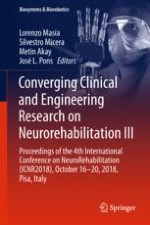2019 | OriginalPaper | Chapter
Wearable Devices and Virtual Reality for Neurorehabilitation: An Opportunity for Home Rehabilitation
Authors : Giovanni Morone, Simone Girardi, Sheida Ghanbari Ghooshchy, Marco Iosa, Stefano Paolucci
Published in: Converging Clinical and Engineering Research on Neurorehabilitation III
Publisher: Springer International Publishing
Activate our intelligent search to find suitable subject content or patents.
Select sections of text to find matching patents with Artificial Intelligence. powered by
Select sections of text to find additional relevant content using AI-assisted search. powered by
